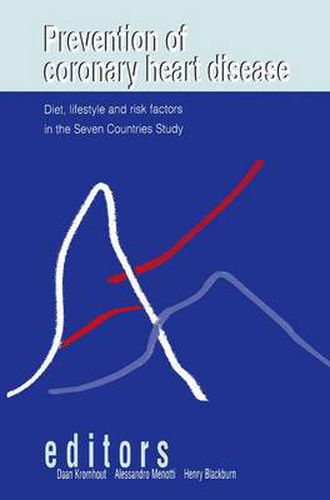Readings Newsletter
Become a Readings Member to make your shopping experience even easier.
Sign in or sign up for free!
You’re not far away from qualifying for FREE standard shipping within Australia
You’ve qualified for FREE standard shipping within Australia
The cart is loading…






This title is printed to order. This book may have been self-published. If so, we cannot guarantee the quality of the content. In the main most books will have gone through the editing process however some may not. We therefore suggest that you be aware of this before ordering this book. If in doubt check either the author or publisher’s details as we are unable to accept any returns unless they are faulty. Please contact us if you have any questions.
The Seven Countries Study was the first to establish credible data on incidence and death rates of CHD in contrasting cultures. The study documented population differences in average levels and distributions of coronary risk factors. It also demonstrated large differences in composition of the diet in otherwise similar, stable, rural agricultural or pastoral populations. Diet and cigarette smoking explained most of the differences in population CHD rates, while changes in serum cholesterol and blood pressure levels between entry and 25-year follow-up examinations explained much of the change in CHD death rates. Results of the Seven Countries Study were crucial to the concept of population causes, that is, the mass phenomena involved in the genesis of coronary heart disease, and which influence widespread individual and species susceptibility. Where environments are unfavourable one finds maximal exhibition of coronary risk and a heavy population disease burden. Where favourable, individual (genetic) susceptibility is attenuated. This concept developed from the Seven Countries study design that combined, for the first time, a population and an individual approach. The study was realised trough effective collaboration established among clinicians, epidemiologists and nutritionists from Europe, the U.S.A., and Japan.
$9.00 standard shipping within Australia
FREE standard shipping within Australia for orders over $100.00
Express & International shipping calculated at checkout
This title is printed to order. This book may have been self-published. If so, we cannot guarantee the quality of the content. In the main most books will have gone through the editing process however some may not. We therefore suggest that you be aware of this before ordering this book. If in doubt check either the author or publisher’s details as we are unable to accept any returns unless they are faulty. Please contact us if you have any questions.
The Seven Countries Study was the first to establish credible data on incidence and death rates of CHD in contrasting cultures. The study documented population differences in average levels and distributions of coronary risk factors. It also demonstrated large differences in composition of the diet in otherwise similar, stable, rural agricultural or pastoral populations. Diet and cigarette smoking explained most of the differences in population CHD rates, while changes in serum cholesterol and blood pressure levels between entry and 25-year follow-up examinations explained much of the change in CHD death rates. Results of the Seven Countries Study were crucial to the concept of population causes, that is, the mass phenomena involved in the genesis of coronary heart disease, and which influence widespread individual and species susceptibility. Where environments are unfavourable one finds maximal exhibition of coronary risk and a heavy population disease burden. Where favourable, individual (genetic) susceptibility is attenuated. This concept developed from the Seven Countries study design that combined, for the first time, a population and an individual approach. The study was realised trough effective collaboration established among clinicians, epidemiologists and nutritionists from Europe, the U.S.A., and Japan.